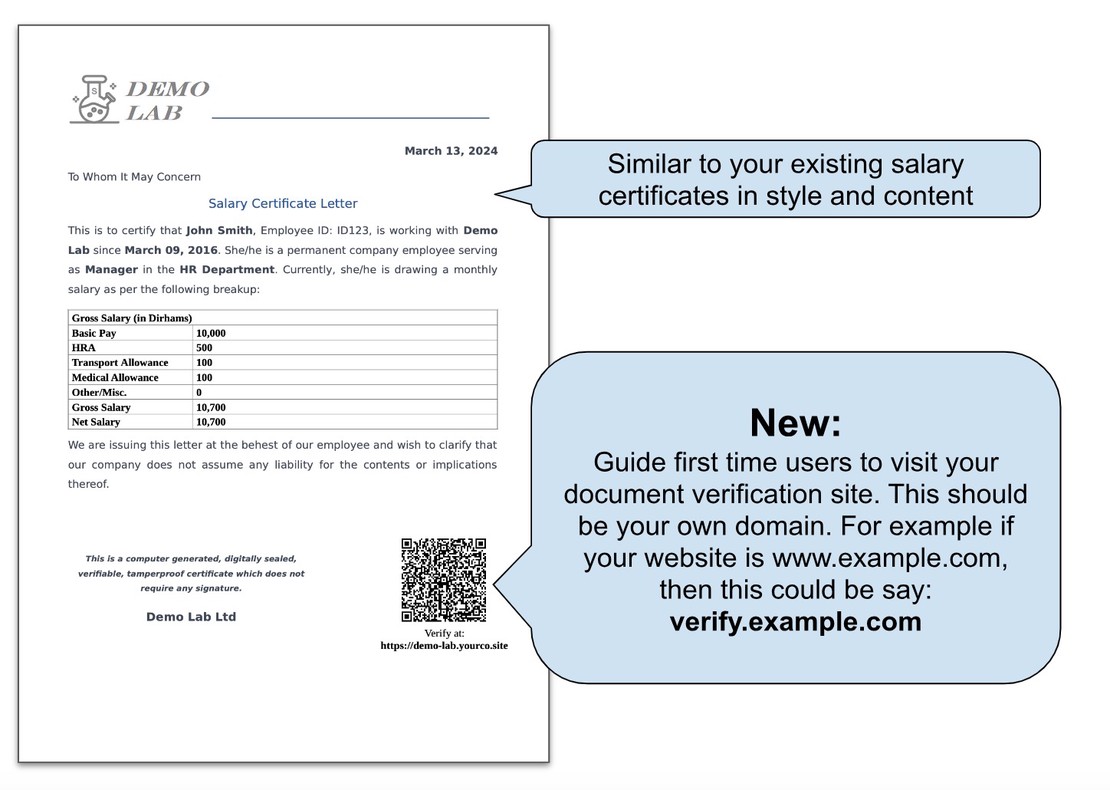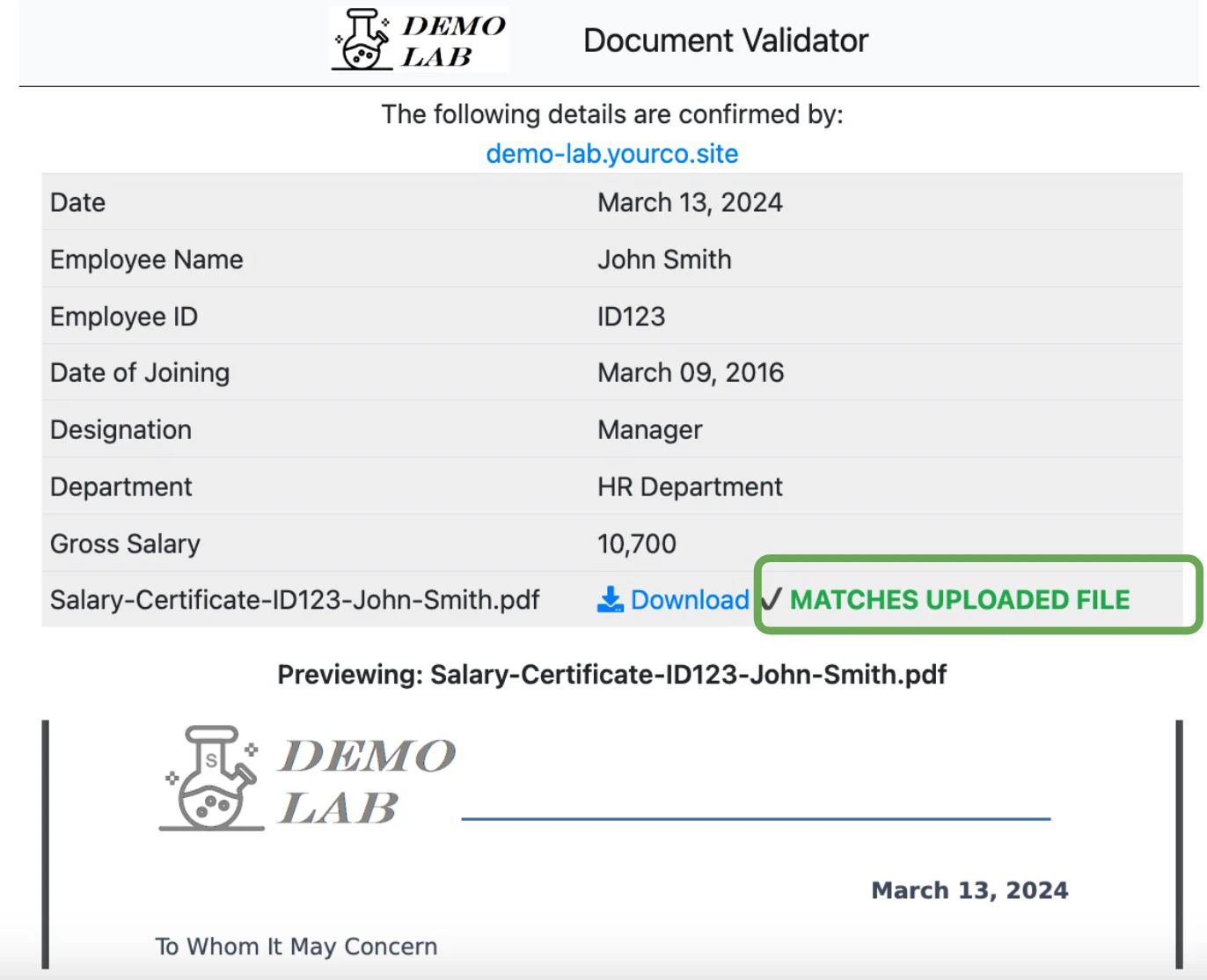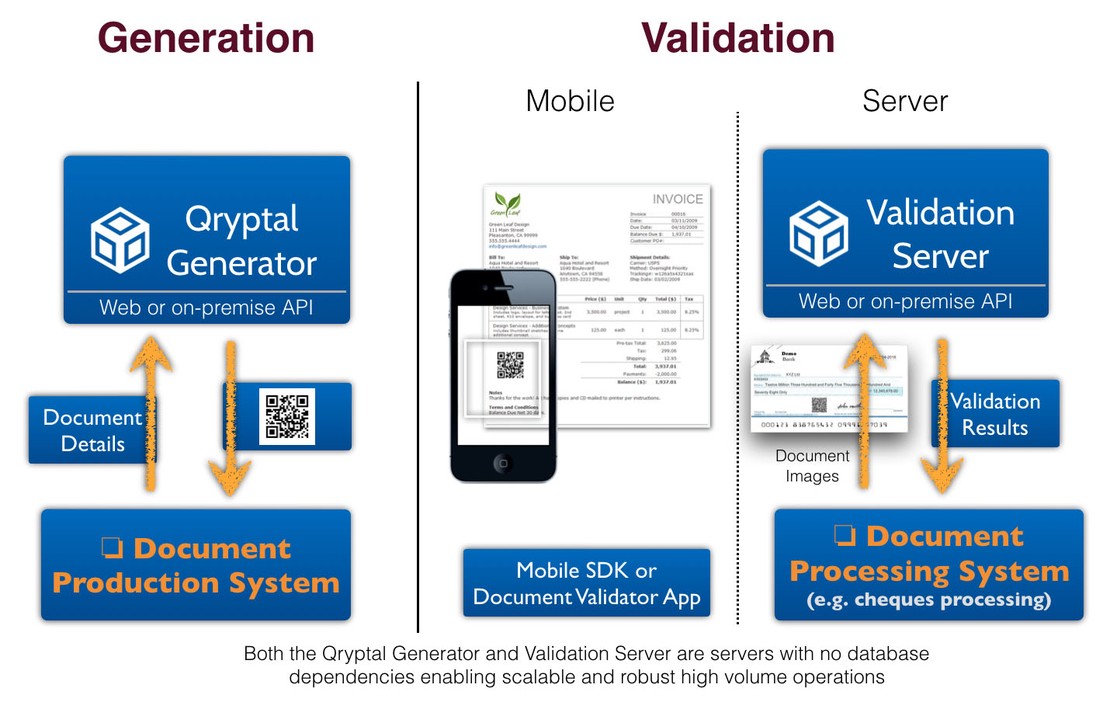How to Generate Verifiable Salary Certificates
- Nikhil Jhingan
- Mar 19, 2024
- 5 min read

Unmasking Fraud: The Power of QR Codes in Verifying Salary Certificates
Human Resources (HR) departments in organisations generate numerous important documents like salary certificates, payslips/pay-stubs and offer letters for employees which in turn get shared with third parties like:
Banks and financial institutions: for providing loans and financial services
Embassies: for issuing visas
Governments: for issuing work permits and residency certificates etc
Landlords/Property owners: for renting accommodation
The importance of such documents further increases in jurisdictions like the Gulf Cooperation Council (GCC) in the middle east where many countries do not have income taxes and the veracity of these HR documents is the foundation on which a large number of organisations rely upon for their processing decisions.
Decades back such documents would often be generated by HR on official letter heads with rubber stamps and signatures so that third parties could “verify” the document. Unfortunately today with easy access to sophisticated scanners, printers and software - it is trivial to create fake and/or tampered HR documents by anyone. Furthermore, in this new era of generative AI, the speed with which such fake documents are being produced is increasing rapidly as the cost of generating such fake documents is dropping fast.
All this technological “progress” has become a sore pain point for HR as third parties realise that the traditional HR documents cannot be trusted and they now resort to contacting HR departments to manually verify these documents directly or via intermediaries. This increases costs for everyone and adds friction to transactions.
At Qryptal we have been focussing on solving such problems since 2011 using secure digitally signed QR codes. Recently during the pandemic, Qryptal solutions were used at nationwide scale for Covid Vaccination certificates and test reports. Efficient generation and easy validation was tested millions of times every day as governments and airlines made verification of these documents a core part of safely opening their borders.
We learned a lot during that period and this post distils the learnings for HR documents for both efficient generation and easy validation so that the HR pain point(s) can be eliminated. Further we delve into how the return on investment can be computed by HR practitioners.
The Verifiable Salary Certificate:

The self-service verification experience:
With the secure Qryptal code on your document and your verification site, third parties can easily validate these documents on their own.

If the verifier uploads the original PDF of the salary certificate then the verification site can not only show the details but also confirm that the uploaded document is identical to the original!

How to generate these verifiable salary certificates?
With our extensive experience, we have made the process very simple. There are primarily two workflows:
A. Self-Service and automated:
The employee needing the salary certificate will use your existing HR portal to request for the certificate and instantly be able to download it. Alternatively if you do not have an HR portal then the Qryptal Generation Portal can be used for employees to generate these certificates instantly.
This workflow requires that the data needed to generate salary certificates resides in some electronic system: It could be an HRMS (Oracle HCM, Oracle Fusion HCM, Peoplesoft, SAP, MS Dynamics) or any database or even a spreadsheet.
The Qryptal solution can be deployed in your data centre or in your cloud account. If you are already using a cloud based HRMS then you can explore the Qryptal integration with Zapier which may save direct integration effort.

B. Manual:
If you do not have an HRMS or do not have salary data in an electronic form then you can continue with your current manual workflow. HR managers can get requests from employees, log into Qryptal Generation Portal (GENP) and instantly generate these certificates based on your template by manually providing the salary certificate details.
Why is this secure?

Return on Investment:
There are two RoI components:
i) Generation:
No need to print: providing electronic verifiable documents saves printing costs and is environmentally friendly.
Self-service efficiency: enabling employees to get these documents on a self-service basis improves HR efficiency. In large organisations, these could reduce head counts as typically just salary certificates are requested 4 to 5 times per year by employees in the GCC. Furthermore there could be additional savings if you have a distributed workforce and employees need to visit the HR office to pick up these certificates.
Better service to employees: providing instant online delivery of these verifiable certificates also improves the level of service provided by HR to employees.
ii) Validation:
Self-service validation: this not only improves the verification experience for third parties but reduces work for HR who today need to field and service these requests from third-parties
Data leakage: enabling third parties to verify on a self-service basis improves data hygiene and reduces the need to share these sensitive documents by third parties with verification agencies and intermediaries.
Since the Qryptal system is easy to implement, typically we expect customers to drive immediate benefits and rapidly recoup their investment. Contact us to discuss how we can help you with this.
Recommended Further Reading
How does this Secure QR solution work?
Securing HR documents - real world use cases
Introducing Qryptal Secure QR codes for HR documents


